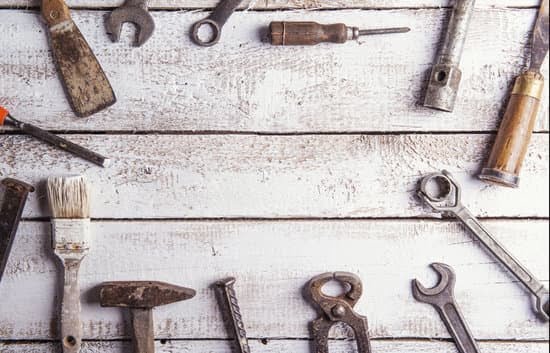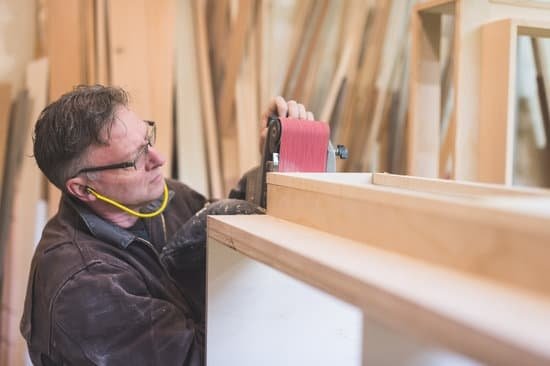Are you a woodworking enthusiast looking to take your craft to the next level? If so, then you know the importance of having a sturdy and reliable workspace.
In this article, we will discuss the essential steps for building a durable woodworking bench that will meet all of your project needs. From choosing the right materials to adding functional features, we will provide you with detailed instructions on how to create a bench that will become an indispensable tool in your workshop.
A sturdy woodworking bench is more than just a piece of furniture – it’s a crucial tool that can make a significant difference in the quality and efficiency of your work. Whether you’re a professional woodworker or simply enjoy woodworking as a hobby, having a sturdy bench is essential for any project. In this section, we’ll explore why a sturdy woodworking bench is so important and how it can enhance your overall woodworking experience.
Throughout this article, we will cover various aspects of building a sturdy woodworking bench, including choosing the right materials, design considerations, step-by-step construction process, joinery techniques, adding functional features, finishing touches, and maintenance tips. By following our guide and using our detailed instructions and diagrams, you’ll be able to build a custom woodworking bench that is not only sturdy but also tailored to your specific needs and preferences.
So let’s get started on creating the perfect workspace for all of your future woodworking projects.
Choosing the Right Materials
When it comes to building a sturdy woodworking bench, choosing the right materials is crucial to the success of your project. The materials you select will determine the overall strength, durability, and longevity of your bench. Here are some tips and recommendations for choosing the right materials for your woodworking bench.
Quality Hardwood
One of the most important considerations when selecting materials for your woodworking bench is the type of wood you use. It’s essential to choose a high-quality hardwood that is dense and durable, such as maple, oak, or beech. These types of wood are less likely to warp or bend over time, making them ideal for creating a sturdy and reliable work surface.
Sturdy Hardware
In addition to quality hardwood, it’s also important to choose sturdy hardware for assembling your woodworking bench. This includes heavy-duty screws, bolts, and other fasteners that can withstand the weight and pressure of your projects. Look for hardware that is specifically designed for woodworking applications and is known for its strength and reliability.
Additional Considerations
Consider factors such as moisture resistance, ease of maintenance, and cost when selecting materials for your woodworking bench. While hardwood is an excellent choice for the work surface, you may want to use a different material for the base or legs. Additionally, consider whether you want to incorporate any metal components into your bench design for added stability.
By carefully considering the type of wood and hardware you use in building your woodworking bench, you can ensure that it will be strong, durable, and long-lasting. Taking the time to choose high-quality materials will result in a sturdy bench that meets all of your woodworking needs.
Design Considerations
Assessing Your Space and Needs
When it comes to designing your woodworking bench, it’s important to consider the available space in your workshop or garage. Take measurements and think about how much room you will need to maneuver around the bench comfortably. Additionally, consider the types of projects you typically work on. If you often work with larger pieces of wood, you may need a longer bench to accommodate them.
Ergonomics and Comfort
The height of your woodworking bench is an essential consideration for ergonomics and comfort. A standard rule of thumb is that the bench should be at a height that allows you to work with your back straight and your arms comfortably positioned for sawing, planing, and other tasks. Consider adding adjustable legs or shims to customize the height to your specific needs.
Incorporating Versatility
While considering the size of your woodworking bench, think about incorporating versatility into the design. Consider including features such as tool storage shelves or trays, built-in vises, or clamping systems that can add functionality to your workspace. By carefully planning the ideal size and shape of your bench, you can create a versatile work surface that meets all of your woodworking needs.
By carefully considering these design elements when planning the size and shape of your woodworking bench, you can ensure that it will meet all of your needs and provide a sturdy foundation for all of your projects.
Step-by-Step Construction Process
When it comes to building a sturdy woodworking bench, the construction process is crucial in ensuring that the end result is not only strong and durable but also functional. Here are some detailed instructions and diagrams to guide you through the step-by-step construction process:
- Start by cutting your wood to the appropriate dimensions based on your design considerations. Measure twice and cut once to ensure accuracy.
- Assemble the frame of the bench using joinery techniques such as mortise and tenon, dovetail, or dowel joints. These techniques will create strong connections that can withstand heavy use.
- Once the frame is assembled, add support braces and cross members to reinforce the structure and prevent any wobbling or instability.
- Next, attach the top surface of the bench using screws or traditional joinery methods. Make sure the top is securely fastened to the frame to provide a stable work surface.
- Install any additional functional features such as vises, clamps, or tool storage according to your specific needs and preferences.
By following these detailed instructions and utilizing proper joinery techniques, you can ensure that your woodworking bench is not only sturdy but also capable of handling heavy-duty projects with ease. And don’t forget to refer to diagrams throughout the construction process for visual guidance.
Joinery Techniques
When it comes to building a sturdy woodworking bench, the joinery techniques used to create a strong and durable frame are crucial. The right joinery methods will ensure that your bench can withstand heavy use and provide a stable work surface for all of your woodworking projects. Here are some key joinery techniques to consider when constructing your woodworking bench:
1. Dovetail Joints: Dovetail joints are known for their strength and durability, making them an excellent choice for connecting the legs and aprons of your woodworking bench. These interlocking joints provide a secure connection that can withstand the pressure and weight placed on the bench during use.
2. Mortise and Tenon Joints: Mortise and tenon joints are another popular choice for creating strong connections in woodworking benches. By inserting a tenon (a projection on the end of one piece) into a mortise (a hole or slot in another piece), you can create a sturdy joint that is resistant to racking and movement.
3. Half-Lap Joints: Half-lap joints involve removing half of the thickness of each piece being joined, allowing them to overlap and create a strong bond when glued or fastened together. This type of joint is often used for connecting workbench stretchers and supports, providing additional stability to the frame.
By using these joinery techniques, you can build a woodworking bench with a frame that is not only strong and durable but also visually appealing. Take the time to carefully plan out your joinery cuts and measurements, ensuring precise fits that will contribute to the overall stability of your bench.
Adding Functional Features
One of the key components of building a sturdy woodworking bench is incorporating functional features that will enhance its usability and versatility. When considering how to build a sturdy woodworking bench, it’s important to think about how you will use the bench and what types of projects you will be working on. This will help determine the specific features you may want to include, such as vises, clamps, and tool storage.
Vises are essential for holding wood securely in place while performing various woodworking tasks such as planing, sawing, and sanding. There are different types of vises available, including front vises, tail vises, and shoulder vises. Each type has its own advantages and ideal uses, so it’s important to choose the right one based on your specific needs.
In addition to vises, incorporating clamps into your woodworking bench design can provide additional stability and support when working with larger or more complex pieces of wood. Clamps come in a variety of styles and sizes, including bar clamps, C-clamps, and pipe clamps. Consider where you will need additional support when working on your projects to determine the best placement for clamps on your bench.
Finally, tool storage is an important aspect of a functional woodworking bench. Having easy access to your most commonly used tools can save time and improve efficiency in your workshop. Consider adding pegboard or custom-built tool holders to keep your tools organized and within arm’s reach while working on your projects.
| Functional Feature | Recommendation |
|---|---|
| Vises | Consider installing a front vise for general purpose woodworking tasks. |
| Clamps | Incorporate bar clamps along the edges of the bench for added support when working with longer pieces of wood. |
| Tool Storage | Install a pegboard or tool rack above or below the work surface to keep your most frequently used tools easily accessible. |
Finishing Touches
When it comes to building a sturdy woodworking bench, taking the time to properly sand, stain, and seal the bench is essential for both aesthetics and functionality. The finishing touches not only enhance the overall look of the bench but also protect it from wear and tear over time. In this section, we will discuss the importance of each step in the finishing process and provide tips for achieving professional results.
Before applying any finish to your woodworking bench, it’s crucial to thoroughly sand the surface to remove any rough spots or imperfections. Start with a coarse grit sandpaper to smooth out any uneven areas, then progressively work your way up to a finer grit for a silky-smooth finish.
Pay special attention to edges and corners to ensure that there are no sharp edges that could cause splinters. Proper sanding not only improves the feel of your bench but also allows for better absorption of stains and sealants.
Once your woodworking bench is sanded to perfection, you can choose to add some color by applying a wood stain. Whether you prefer a natural wood look or want to match your bench to other furniture in your workspace, there are countless stain options available.
After allowing the stain to fully dry according to the manufacturer’s instructions, it’s time to seal the wood. A high-quality polyurethane sealer will protect your bench from dings, scratches, and spills while also bringing out the natural beauty of the wood grain.
| Step | Description |
|---|---|
| Sanding | Thoroughly sand the surface with coarse grit sandpaper first, then progressively work your way up to finer grit for a smooth finish. |
| Staining | Apply wood stain of choice after proper sanding is completed; allow it to fully dry before sealing. |
| Sealing | Use a high-quality polyurethane sealer after staining is complete; this protects against damage while enhancing wood grain. |
Tips for Maintenance and Longevity
Once you have built your sturdy woodworking bench, it’s important to take good care of it to ensure its longevity. Regular maintenance will also help keep your bench in top condition, allowing you to continue using it for years to come. Here are some tips for maintaining and caring for your woodworking bench.
First and foremost, it’s essential to keep your bench clean. Sawdust, wood shavings, and other debris can accumulate on the surface and in crevices, which can lead to wear and tear over time. Use a vacuum or compressed air to regularly remove any build-up of dust and dirt. Additionally, wiping down the surface with a damp cloth after each use can help prevent the accumulation of grime.
Another important aspect of maintaining your woodworking bench is to regularly check for any signs of wear or damage. Inspect the joints, frame, and any added features such as vises and clamps for any loose or damaged parts. Addressing these issues promptly can prevent further damage and prolong the life of your bench.
Lastly, consider applying a protective finish to your woodworking bench to guard against moisture, scratches, and other forms of damage. Depending on the type of wood used for construction, you may choose to apply varnish, lacquer, or a specialized wood sealer. Follow the manufacturer’s instructions for application and reapplication intervals to keep your bench well-protected.
By following these maintenance tips and ensuring regular upkeep of your woodworking bench, you can enjoy its benefits for many years while keeping it in top condition. Taking proper care of your sturdy woodworking bench will not only extend its lifespan but also ensure that it continues to be a reliable work surface for all your future projects.
Conclusion
In conclusion, building a sturdy woodworking bench can be a rewarding and satisfying project for any woodworker. By following the tips and recommendations for choosing the right materials and finding the ideal size and shape, you can create a bench that meets your specific needs and specifications. The step-by-step construction process, detailed instructions, and diagrams provided in this article can guide you through the building process, ensuring that your bench is strong and durable.
Additionally, by learning joinery techniques to create a solid frame and adding functional features such as vises, clamps, and tool storage, you can customize your bench to suit your woodworking style. The finishing touches of sanding, staining, and sealing the bench will not only enhance its appearance but also protect it from wear and tear over time. By following maintenance tips to keep your bench in top condition, you can ensure its longevity.
Ultimately, the satisfaction of building your own sturdy woodworking bench cannot be understated. Not only will you have a reliable workspace for all of your future projects, but you will have gained valuable skills and knowledge along the way. So go ahead and embark on this woodworking journey – with careful planning and attention to detail, you’ll soon be enjoying the benefits of working at a custom-built bench that was crafted with your own hands.
Frequently Asked Questions
Is It Cheaper to Build a Workbench or Buy One?
The cost of building a workbench versus buying one depends on various factors such as materials, tools needed, and your own labor. In some cases, building a workbench can be cheaper, especially if you already have the necessary tools and skills.
What Is the Best Wood for a Woodworking Bench?
The best wood for a woodworking bench is typically a hardwood like maple, oak, or beech. These woods are durable and can withstand the wear and tear of woodworking tasks. Additionally, they provide a sturdy surface for working on various projects.
How Do You Make a Bench Stable?
Making a bench stable involves using solid construction techniques such as proper joinery, leveling the legs, and adding diagonal bracing for reinforcement. Additionally, attaching the bench to a wall or floor can further enhance its stability and prevent any wobbling during use.

Hi everyone! I’m a woodworker and blogger, and this is my woodworking blog. In my blog, I share tips and tricks for woodworkers of all skill levels, as well as project ideas that you can try yourself.





